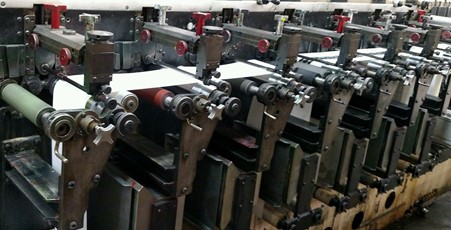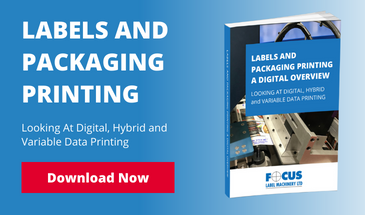
Although famous for their robust framework and reliability, flexographic presses can suffer damage and faults over time. As a flexo press is a considerable investment, it is often a difficult decision whether to replace or repair the machine – especially if repair costs have been mounting up, or the press is approaching obsolescence.
Below are some factors to consider before choosing between the two options:
The level of damage
This is the first factor you want to consider, especially in terms of cost, downtime and the extent of the damage. For instance, if the machine is badly worn and would take a long time to repair, the best route might be to replace it. The more significant and widespread the damage, the more likely there will be a delayed knock on effect on other components, creating a domino effect of damage and repair. On the other hand, if the damage can be repaired quickly or the faulty component easily replaced, repair is the obvious choice.
How essential is the machine?
How critical to your operations is the faulty flexo press? If it is a secondary machine, or approaching its end of life, replacing it might be a better option, especially if the repairs are extensive or costly. Repairing an old, unreliable, or seldom-used back up press may take more time because you have to determine the exact problem, get replacement parts, fix the issue, then test the machine. However, it still depends on the level of damage.
Upgrading a Press...?
A flexographic press is made up of a number of integrated systems. Whilst a press may be perfectly reliable mechanically the electronics & drying systems can often let a machine down and a source of breakdowns. Its often worth investigating the cost of upgrading a Press. For example installing a new UV system to replace an existing IR or old UV drier can bring an old press right up to date.
The cost
New flexographic presses are large capital investments, so a fundamental consideration is the cost of repair versus the cost of replacement. Most of the time, it is significantly less costly to repair or replace the damaged components than to invest in a new machine. However, if you have to keep repairing or replacing some parts of the machine time after time, you might end up spending almost as much money over time as you would on a new press. Therefore, it would be wiser to assess the amount of wear, and consider the age of the machine before you choose to spend money on repeated repairs.
Productivity
You also want to consider the productivity of the machine against that of a new one. Developments in flexographic printing have made the newer generation of hybrid presses orders of magnitude more efficient than earlier models. Even if your current press is a workhorse that hasn’t needed many repairs to date, getting a new one may end up earning you more money than repairing the old one. Therefore, you may need to conduct a lifecycle cost analysis on the machine beforehand.
If you decide to get a new machine, make sure to include the cost of insurance, taxes, storage, or disposal of the old one and interest, in addition to the purchase price. When deciding whether to replace a flexographic press or repair, always consider the reliability aspect of the machine. The aim is always to increase the mean time between failure, to reduce the amount of downtime and other associated costs.
Minimising damage and maximising output
Regular planned preventative maintenance will help you determine the state of your machine at all times and avoid spending a lot of money on repairs and replacement. It also helps to have a strategy in place for instances when machines get damaged - for instance, by having a back-up press on standby, or a reliable supply partner to help you avoid bottlenecks during repair downtime.
Find out more
For further information, please have a chat with one of our team. We’ll help you compare costs and come to the best investment decision for your business.





